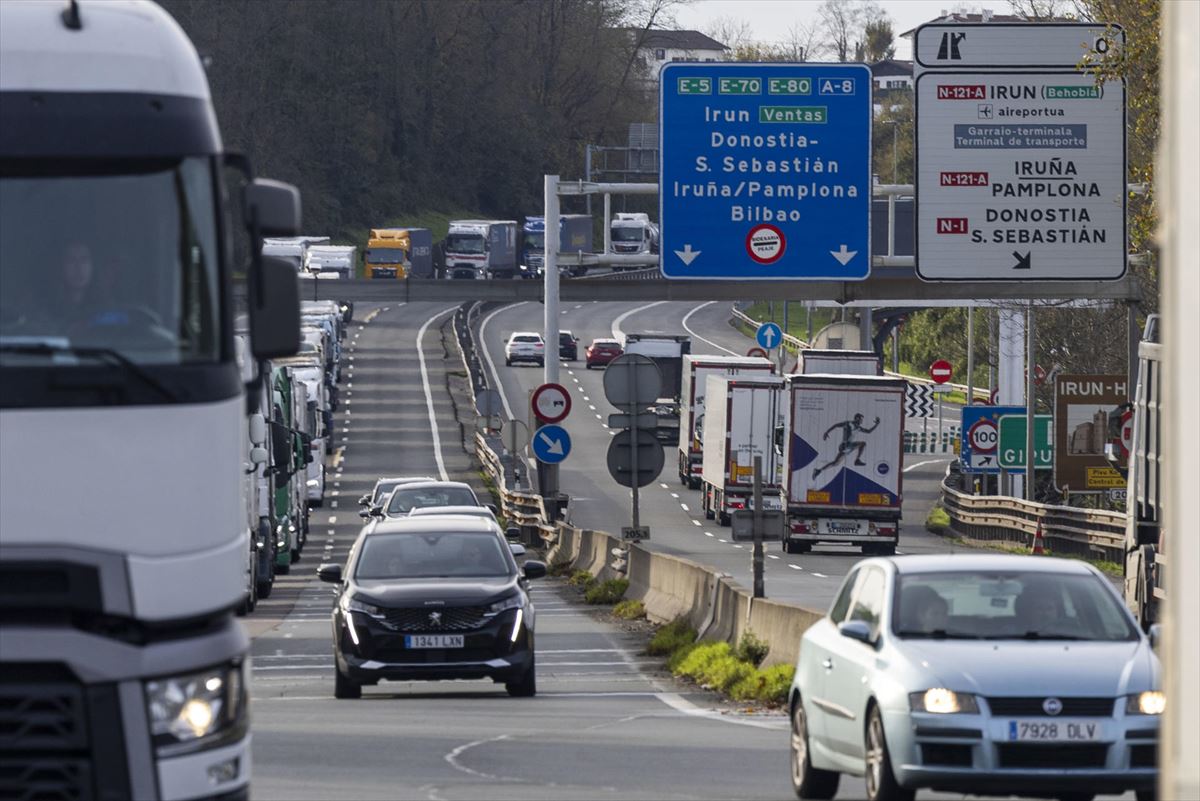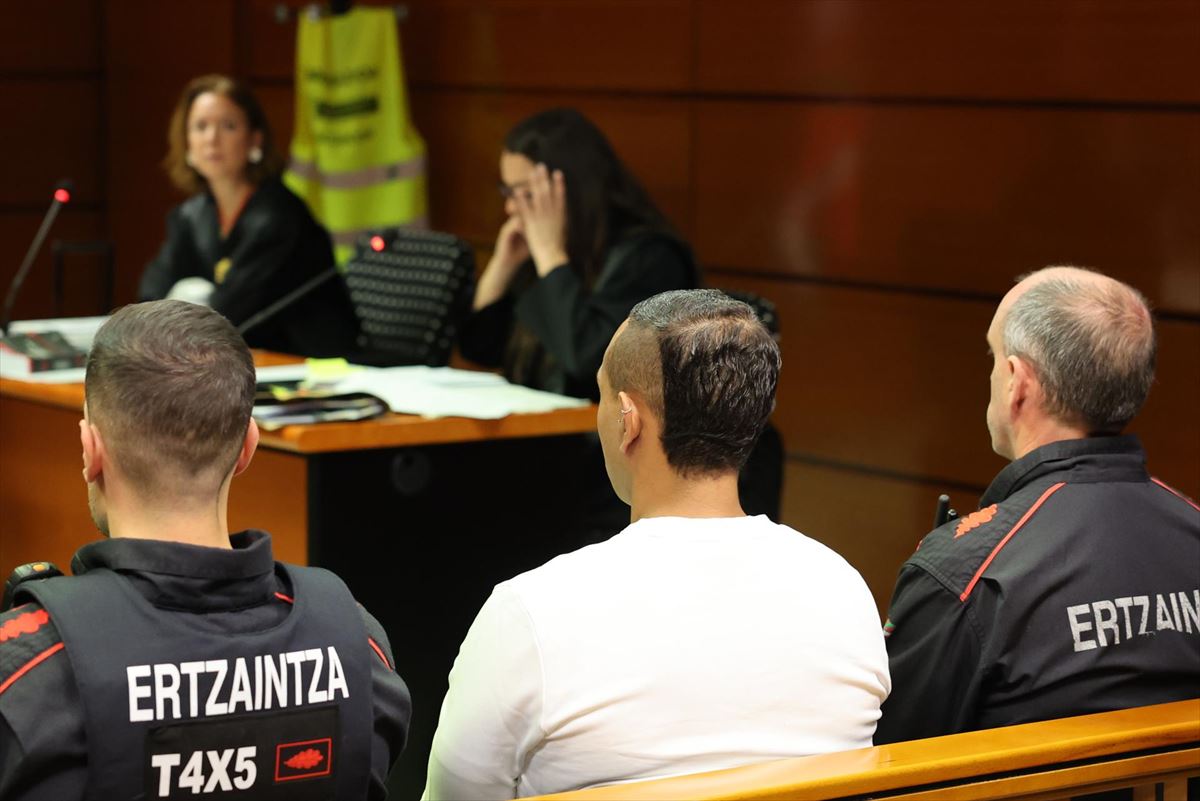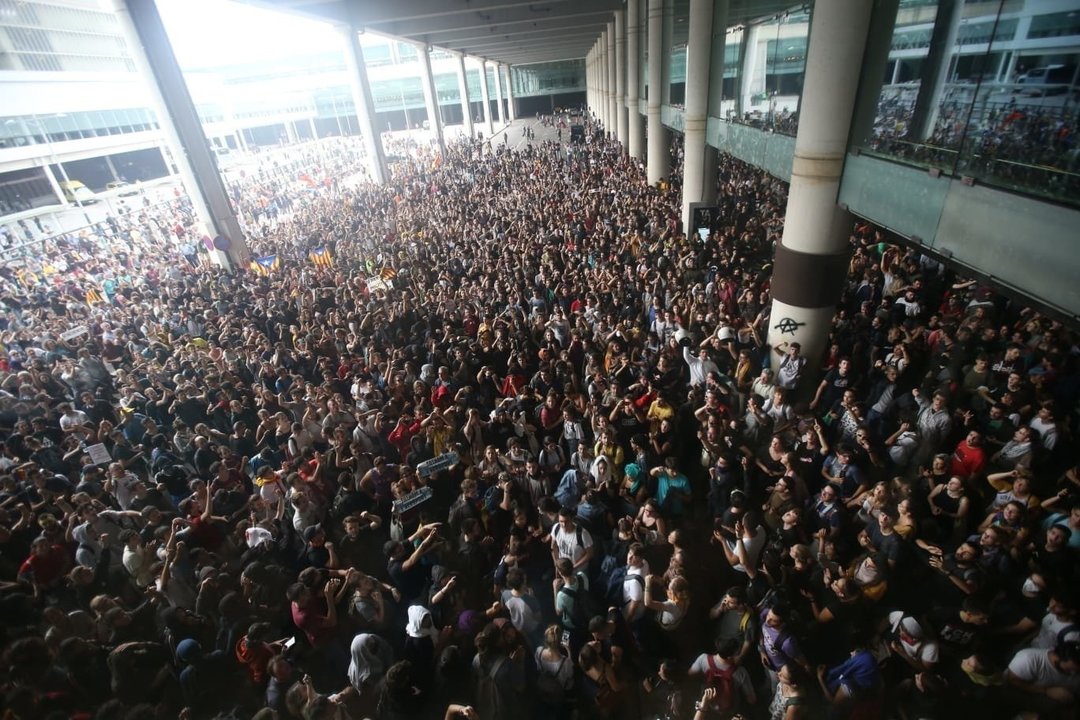Peace and justice call for acquittal
- The political impetus and another macroquerella under the legal doctrine of “everything is ETA” is the one that has suffered 32 people and 110 organizations from the Abertzale Left. The trial is over after 12 years, and now it is the turn of the jury. It was already against justice, but in the new scenario after the cessation of ETA’s armed activity it is Kafkaesque. At the Spanish National Hearing, at least once again, it has become clear that this has nothing to do with ETA and that the political activity of several members of the Abertzale left is to be punished.
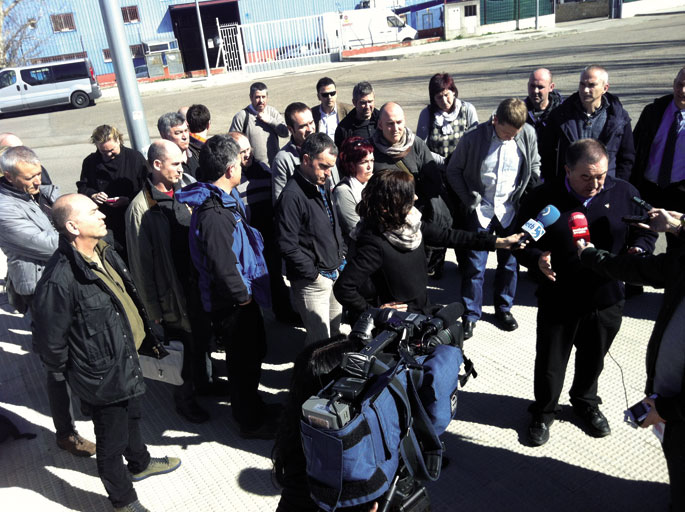
José María Aznar in summer 1998: “Did you think we wouldn’t dare?” Egin eta egin Irratia is a phrase launched by the lehendakari of the Spanish Government and the pp leader after its closure in summer 1998, which reflects what the main Spanish presidents thought about the Abertzale left and the fight against ETA: The State saw that it had to deal differently with ETA and the Abertzale left and launched it. The truth is that it had already begun, since in 1997 the HB National Bureau was imprisoned for using in the official space electoral propaganda a video on the Democratic Alternative broadcast by ETA. The erasure of the arrests, macro-processes and incarcerations of the following years demonstrated how much the State’s courage would reach.
Case 18/98, the Parties Act, the Herriko Tabernas case, the Jarrai-Haika-Segi case, the Egunkaria case, the Amnesty and Askatasuna Commissions and the Udalbiltza case were the most prestigious macrosummits. According to the new political and legal doctrine "everything is ETA", the members of the parties, organizations and companies involved were members of ETA and were given harsh penalties to dozens of people. Both the newspaper and the members of Udalbiltza were completely free after their trial and in early 2009, for example, the Spanish Supreme Court annulled the egin closure order, eleven years after the closure.
The record began on 17 October and on 12 March 2013 the oral session of summary 35/2002, also known as the Herriko Tabernas case, ended. He is currently awaiting trial. For five months, 34 defendants and more than 30 lawyers from 110 hospitality establishments have moved from Euskal Herria to the headquarters of the Spanish National Hearing in San Fernando de Henares (Madrid). The defendants, who have already served 30 years in pre-trial detention, have paid a bond of EUR 1.75 million and have spent EUR 700,000 million at the cost of the trip and the case.
Most defendants are members of smaller companies such as HB, Batasuna, Euskal Herritarrok and Left-Ezkerra, Eneko S.A. or Erigane. The indictment? The case has consisted of two branches, one of which has been called politics and which are accused of belonging or collaboration with ETA. On the other hand, the economic branch in which local bars 110 have been supported by the financing of ETA through its activity.
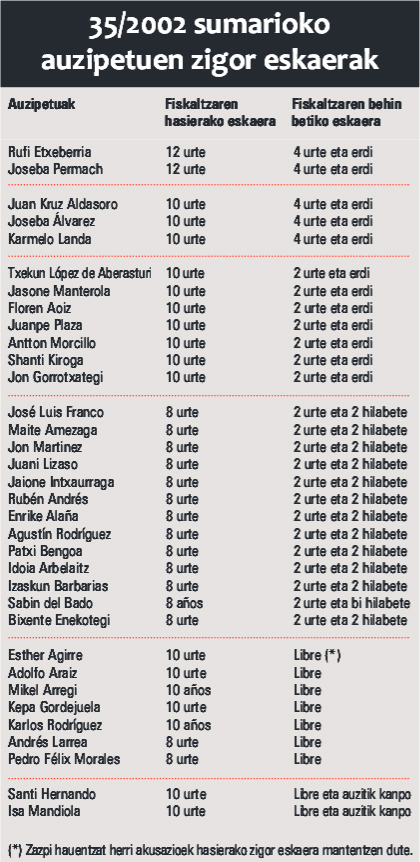
The tribunal has been composed of Judges Ángel Hurtado, Julio de Diego and Clara Bayarri, who have decided to reject the petition. On the part of the Public Prosecutor’s Office, Vicente González Mota has instructed the political order and Marcelo Azkarraga, the economic one. The AVT and Dignity and Justice associations have also attended. Jone Goirizelaia, Iñigo Iruin, Kepa Landa and Adolfo Araiz have been in charge of the defence of the accused and more than 30 lawyers have exercised the defense of the tobacco herriko. The oral hearing began with the penalties of 12, 10 and 8 years in prison of the Prosecutor’s Office, plus the requests for dismissal. Confiscation of their property was requested for the Herriko Tabernas.
04:15 Etxarri-Aranatz
6 March. It is 04:15 a.m. and Juan Kruz Aldasoro has left the cottage of Etxarri-Aranatz. At 04:45 hours he received Cheun López Aberasturi in the Plaza Ezkaba district of La Chantrea. Huarten Santi Kiroga. Half an hour later, the van has been picked up in Tafalla by Floren Aoiz, Adolfo Araiz and his son Urko Araiz, who exercise secretaries of attorney in the case. The PSOE’s ban on the PSN from tabling a motion of censure against UPN has been known hours before. Faced with the cold of the early morning and the tension of the day, the imputees have worked in detail the clues left by the PSN play in a warm talk, until the sleep and silence prevailed again. Then a lunch, a little bit of COPE, and about to arrive in Madrid the first leaks of El Mundo about the trial: the prosecutor is going to reduce the requests for penalty.
The van has been intercepted at the doors of the National Court, where it has been intercepted. Other vehicles from Álava, Bizkaia and Gipuzkoa have also reached the area affected by the collapse. For the eleventh time they all entered. This is the turn of González Mota, representative of the Office of the Attorney General of the State. Yes, the new demands for punishment are much lower: 4 years and 6 months ' imprisonment of 12, 10 and 8 years ' imprisonment, and has moved to 2 years ' imprisonment and 2 months ' imprisonment (see more specifically in the infographic on the next page). And the surprise: He has also withdrawn the charges against Santi Hernando and Isa Mandiola, and the popular accusations, which have denied any kind of irregularity. “You are free, you can leave the group of defendants and sit at the back of the room,” the president said. For the local bars and associations, however, there is no criminal mitigation and the Office of the Prosecutor has ratified the kidnapping of all its assets.
Twelve years have passed since the nightmare of the defendants began in the National Court. In April 2002, Judge Baltasar Garzón issued an arrest warrant against 12 members of Batasuna and several companies in Garzón. The Spanish security forces had been investigating the institutions of the Abertzale left for three years, as well as a large number of companies. Following the break-up of ETA's ceasefire in early 2000, the Spanish Congress also prepares the illegalizations of HB, Batasuna and EH and in June 2002 the Parties Act was approved. They pursued the left Abertzale in two ways: Garzón through criminal proceedings and the Parties Act by administrative means. Garzón feared that the administrative route would be brought forward and in July 2002 more than one hundred bank accounts and 75 companies were seized. In August 2002, the Union’s criminal activity was suspended for three years – the Parties Act continued the administrative route. However, Garzón also needed natural persons to cut this activity by criminal means and charged 40 people, mainly members of HB, Batasuna and EH, from the list prepared by the Spanish police. In March 2003, the Supreme Court ordered the legalization of the political forces of the Abertzale left by the Parties Act.
Ethnic cleansing and GDP of the Southern Basque Country
Judge Garzón, for his part, in 2002 asked the National Police Intelligence Units Service (UCI) (SEBIN) to issue a report proving all these allegations. The report had to demonstrate that the political organisations on the Abertzale left were ETA’s internal structures, but, in addition, other large-scale accusations were also the subject of trial. For example:
– That ETA and its broad structure led to genuine ethnic cleansing and that, through pressure, much of the population managed to leave Euskal Herria.
– The judge stated that the investigation would be difficult, “because it is necessary to clarify how ETA and its terrorist structures have been ‘cleaned’, especially HB-EH and Batasuna, the electoral roll of Euskal Herria”. – That HB,
EH and Batasuna exerted all kinds of pressure against the Spanish population for their exclusion or expulsion from the Basque Country. By way of example, it was said that in the 1990s in the hospital of Barakaldo the HB militants falsified the birth certificates of the children born in the hospital, passing by being born in Bilbao, so that the newborns could not appear with the origin of Barakaldo, which was not sufficient Basque.
– That with force, these institutions replaced democratic decision-making mechanisms and set as an example the Lemoiz nuclear power plant and the Leizaran motorway.
– That in order to round the car, these institutions obtained electoral results by means similar to those used by the Nazis during the Weimar Republic in Germany.
To prove them, he asked the Ministry of the Interior to make a police report as comprehensive as possible: The list of all the attacks of ETA since its inception, the personal and economic damages suffered in them, the counting of the events of kale borroka since 1990, the kidnapping lists, the list of weapons captured to ETA, the seizures of materials used in the street fight, the list of headquarters and assets of these organizations, the public interventions of the members of these terrorist organizations, the list of police officers, journalists, Everything that is described, even if it looks like filmes, is sent long and precisely in the Baltasar Garzón car of October 16, 2002. And to round off the situation, the Prosecutor’s Office has used as experts in the oral case the police and civil guards who carried out these investigations.
The accusations have also used the 1992 document Udaletxe, which was used to condemn the defendants in summary 18/98, to erect the essence of this summary 35/02. According to the text, HB would be ETA’s institutional and mass front, while KAS would coordinate all the structures of the Abertzale left. For its financing, ETA would have a broad network of companies and associations. It was curious, for example, how prosecutors acted on March 6 and 7, reiterating that AEK was part of this project, even though the National Hearing at the time exempted this institution from these charges.
Too long instruction
In 2005 and 2006, Baltasar Garzón organized conferences in New York during which Judge Fernando Grande-Marlaska took the case provisionally, under a study license. This, in January 2006, prolonged the cessation of EU activity for another two years. Garzón repeated the case in June 2006 and in January 2008 he wrote his last car in which he prosecuted 41 people and 110 bars of the locality. Finally, of those 41 people, 32 are awaiting sentencing. Garzón also concluded that the incidents on the streets charged to the Abertzale left by these events caused damages amounting to EUR 24 million. In addition, all the damage caused by ETA was attributed to HB, Batasuna and EH, and for this it provided for the seizure of all the bars of the town.
But the situation was complicated and the Garzón route and that of the Parties Act were retangled. As a result of the legalization of HB, Batasuna and EH, the Supreme Court ordered in 2003 the liquidation of their assets. However, in 2007, the same Chamber of the Supreme Court unanimously ruled that the tobacco herriko could not be kidnapped because they were not legally owned by the Union and their owners were specific natural persons. This also influenced case 35/2002, since at first all the bars of the town wanted to be tried en bloc, but they have finally been tried individually by this judgment. It has been legally, but now we have to see how the court acts, because in the references to them the prosecutor’s office has acted consistently in the oral case, taking all the bars of the town as a block of societies to the orders of HB and Batasuna.
Twelve years after the start of the case until the oral hearing, the prosecutor's office has therefore reduced its requests for grief with the attenuation of "unjust procrastination". In addition, in some of the issues of recent years, the Supreme Court has also appealed for the punishment of those convicted under the doctrine “everything is ETA”, which has also influenced the reduction of prison sentences. In the latter case, Baltasar Garzón also withdrew all allegations of ethnic cleansing and protection against him.
Absolution
Defense lawyers, for their part, have called for the acquittal of all defendants on the understanding that a thesis has been made in case 35/2002 and that subsequently a giant legal history has been built to demonstrate this thesis, using as evidence the police reports destined for it. The National Court thus accused the investigating judges of these two cases in the Egunkaria and Udalbitza cases, preparing the first thesis and preparing the case for further support, but they did not provide evidence to corroborate the veracity of their thesis, so the acquittal was decreed.
Many accusations were made by prosecutors, but all accusations were made about political activity, and even at the end of the trial an attempt was made to establish that it was not about being part of ETA, that the HB itself was criminal and that, therefore, it was enough to be HB to be part of the terrorist organization. But no, no one has designated HB or Batasuna as a terrorist organization. HB was legal before 2003, and subsequent political activity has also been based on people's right to do so.
They are not only defense attorneys, but also lawyers and jurists like Iñaki Lasagabaster, Nazario Oleaga, Txema Montero, María José Virto and others. And, basically, this is what the PNV denounced last week in its opinion on the case: that these macro-processes are legally unfair and that it is time to put an end to them. And in 2009, at the request of the defendant Karmelo Landa, the UN Working Group on Unfair Detentions concluded that Landa's arrest and detention was unfair. But I added more: That even if the Union is illegal, people have the right to act in politics. Moreover, while the Abertzale left was working on the preparation of the 2006 Loiola peace programme, Baltasar Garzón himself informed many of the defendants that he was not part of Batasuna, but that they could act as members of the Abertzale left. And so there were for a long time many politicians from the Abertzale left.
Logic and justice require acquittal, but what has been said time and again, this has been judged in the Spanish National Court, leaving the judgment totally suspended. The threat of confiscating more prisons and property from associations at the time of peace is surreal, but there it is.
Agorrilaren 27an igorri nizuen gutunean, irailaren 10eko auzian euskaraz deklaratzeko asmoa nuela adierazi nizuen. Auzi honen hastapenean, epaile nagusiari euskaraz zekienez galdegin nion. Gutxiespenarekin ezetz erantzun zidan. Orduan, nere gutuna eskuratu zuenez frantsesez... [+]









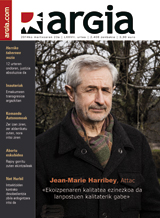


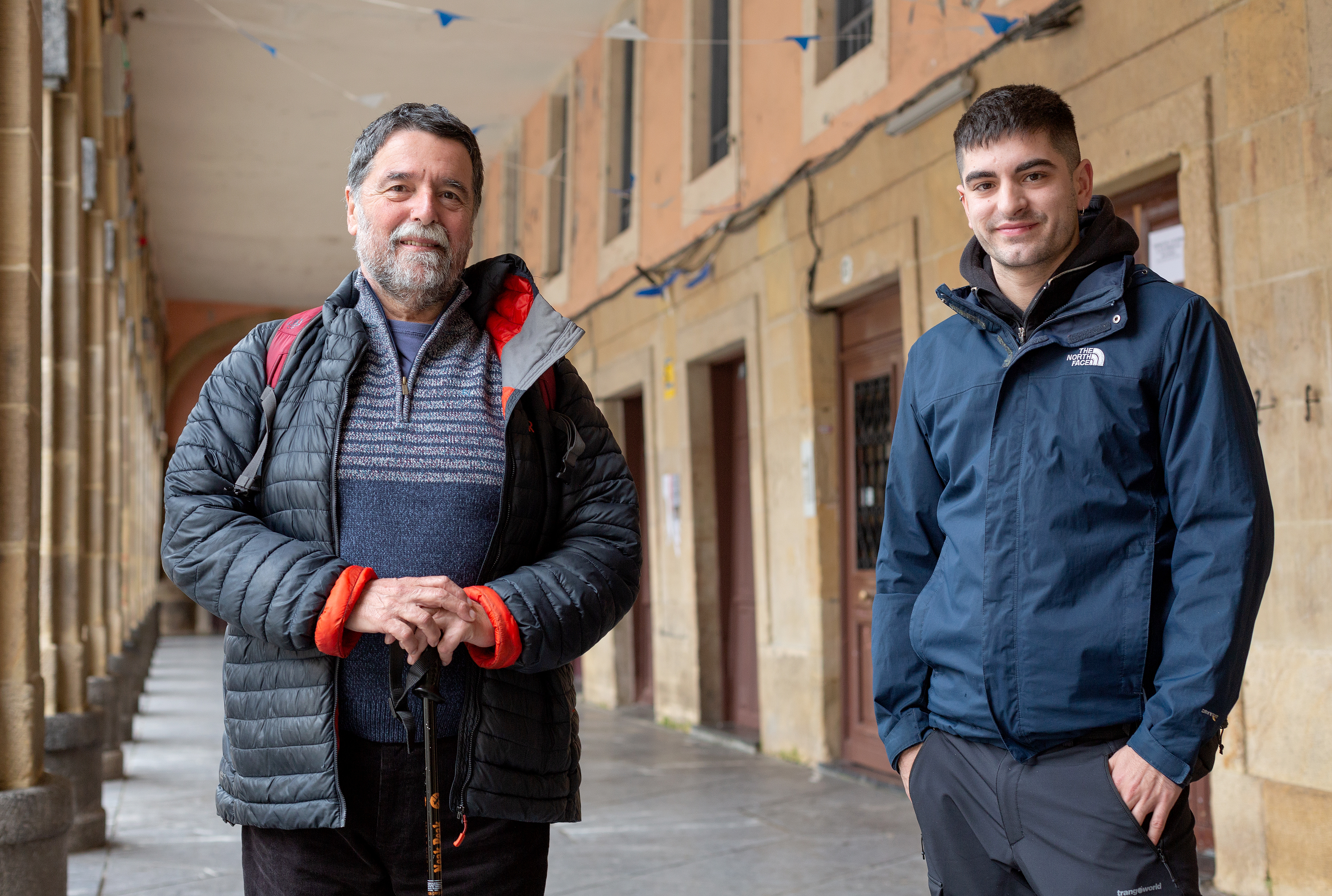
.jpg)


